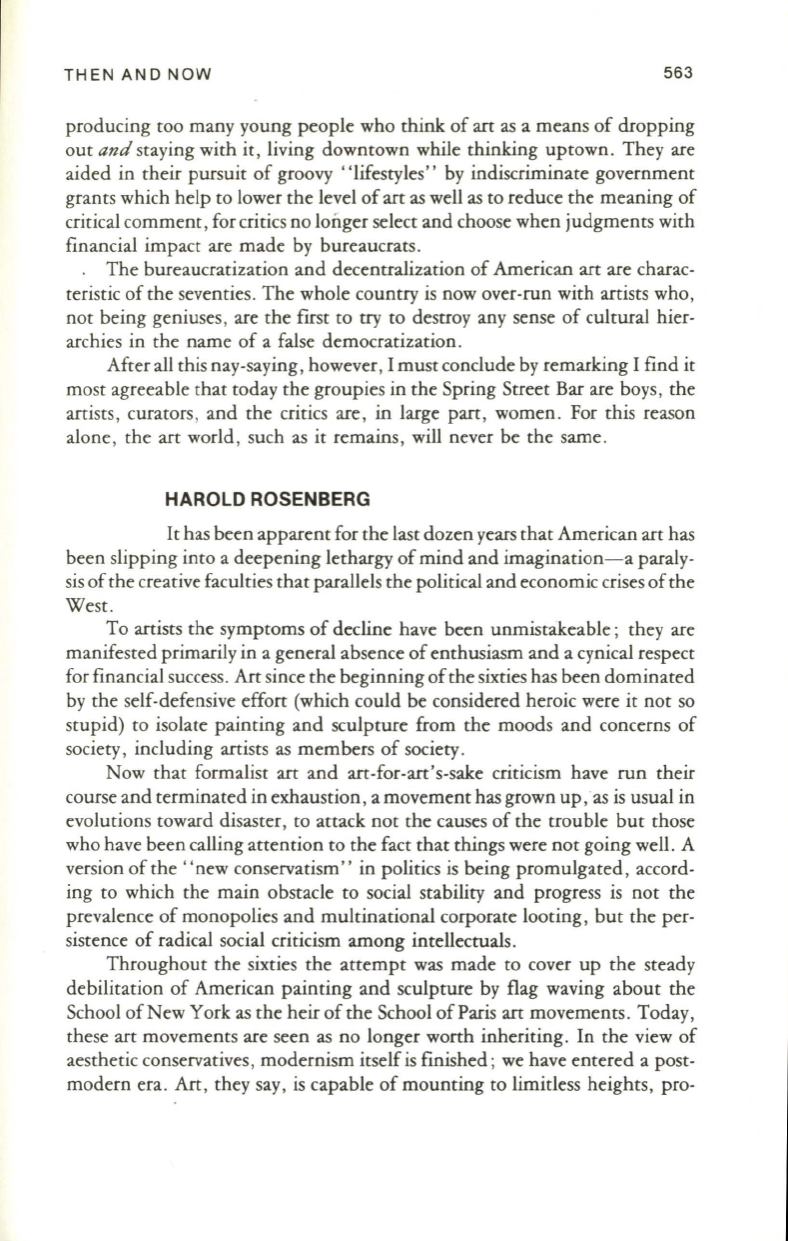
THEN AND NOW
563
producing too many young people who think of art as a means of dropping
out
and
staying with it, living downtown while thinking uptown. They are
aided in their pursuit of groovy "lifestyles" by indiscriminate government
grants which help to lower the level of art as well as to reduce the meaning of
critical comment, for critics no longer select and choose when judgments with
financial impact are made by bureaucrats .
The bureaucratization and decentralization of American art are charac–
teristic of the seventies. The whole countty is now over-run with artists who ,
not being geniuses , are the first to try to destroy any sense of cultural hier–
archies in the name of a false democratization .
After all this nay-saying, however, I must conclude by remarking I find it
most agreeable that today the groupies in the Spring Street Bar are boys , the
artists , curators , and the critics are, in large part, women. For this reason
alone , the art world , such as it remains , will never be the same.
HAROLD ROSENBERG
It
has been apparent for the last dozen years that American art has
been slipping into a deepening lethargy of mind and imagination-a paraly–
sis of the creative faculties that parallels the political and economic crises of the
West.
To artists the symptoms of decline have been unmistakeable; they are
manifested primarily in a general absence of enthusiasm and a cynical respect
for financial success. Art since the beginning of the sixties has been dominated
by the self-defensive effort (which could be considered heroic were it not so
stupid) to isolate painting and sculpture from the moods and concerns of
society, including artists as members of society.
Now that formalist art and art-for-art's-sake criticism have run their
course and terminated in exhaustion, a movement has grown up ," as is usual in
evolutions toward disaster , to attack not the causes of the trouble but those
who have been calling attention to the fact that things were not going well. A
version of the "new conservatism" in politics is being promulgated , accord–
ing to which the main obstacle to social stability and progress is not the
prevalence of monopolies and multinational corporate looting, but the per–
sistence of radical social criticism among intellectuals.
Throughout the sixties the attempt was made to cover up the steady
debilitation of American painting and sculpture by flag waving about the
School of New York as the heir of the School of Paris art movements. Today,
these art movements are seen as no longer worth inheriting. In the view of
aesthetic conservatives, modernism itself is finished; we have entered a post–
modern era. Art, they say, is capable of mounting to limitless heights, pro-


